Making the Most of a Mall
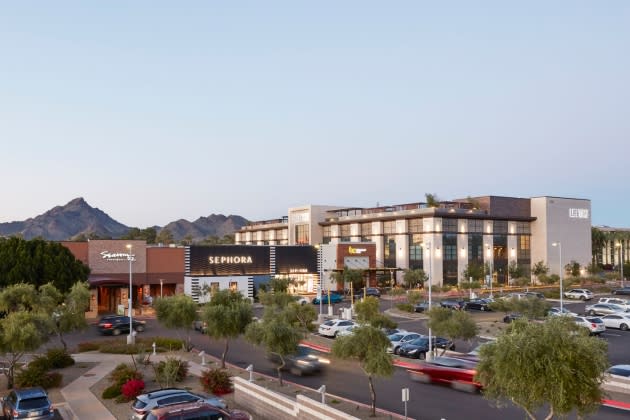
In the mass movement by mall owners to recast tired, unproductive or vacant square footage into alternative uses, Macerich seems one step ahead.
The Santa Monica, California-based mall owner and operator is steadily repurposing its square footage, in several cases transforming closed department stores or underutilized parking lots into residences, offices, hotels, experiential concepts such as museums and fitness centers, electric vehicle showrooms, large-format entertainment, more food and beverage, and with a variety of direct-to-consumer brands eager to add brick-and-mortar locations.
More from WWD
“Today, probably 15 to 20 percent of our portfolio is non-traditional use, and I could see it going as high as 30 to 40 percent,” said Tom O’Hern, the chief executive officer of Macerich.
“We’ve got 44 properties and I would say 30 of those are doing some form of diversification and densification.”
That’s exactly what’s driving the strategy at Macerich, which next year marks its 60th year in business and 30 years as a public company.
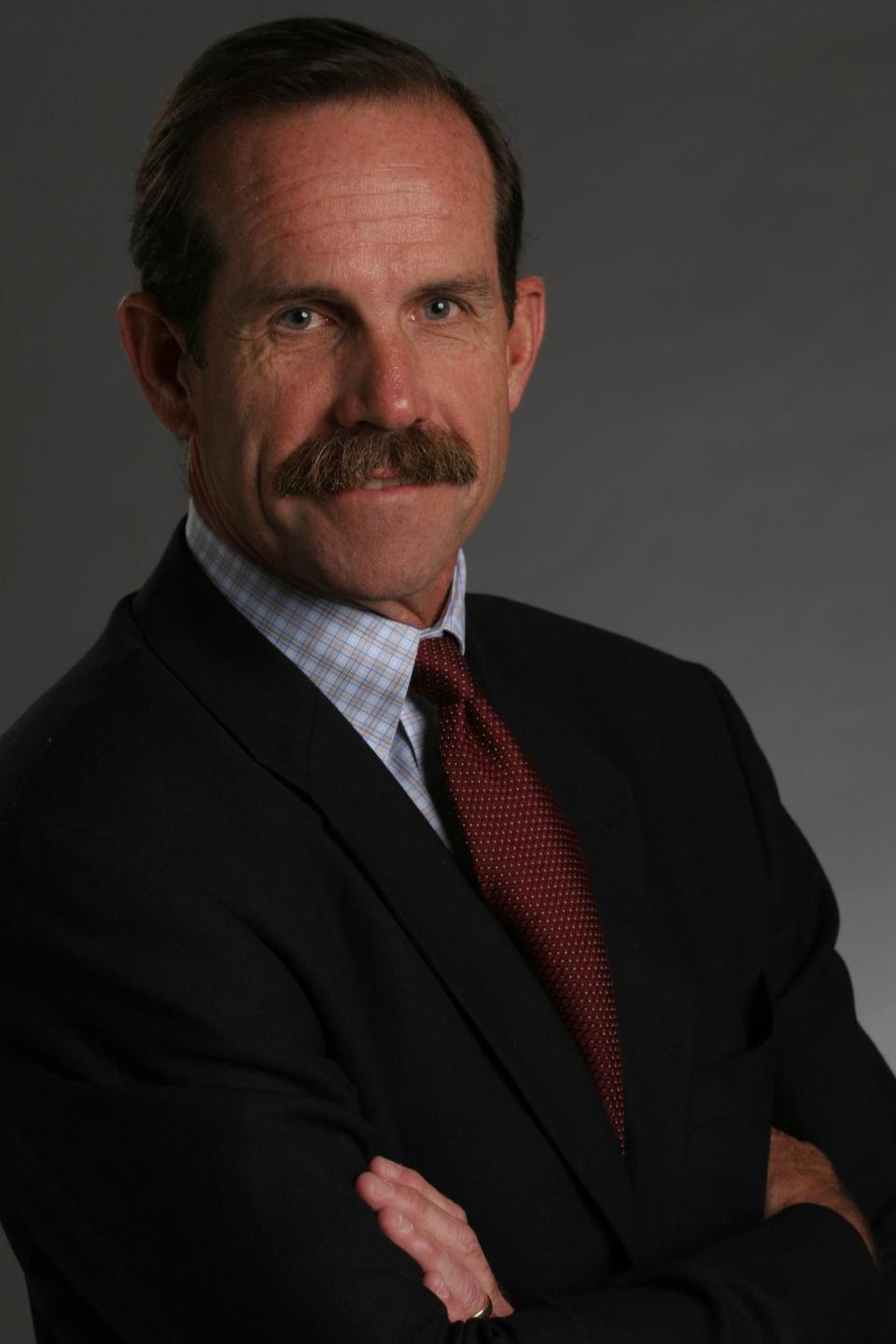
Inflation and higher interest rates make it more expensive and riskier to finance redevelopments, and offices and apartment buildings involve high levels of capital expenditure. Moreover, these types of investments are relatively new to Macerich, adding to the risk. But it’s imperative that Macerich, and for that matter the entire shopping center industry, continue to adapt to the impact of Amazon and internet shopping, declining traffic counts in malls, and how consumers are spending more of their discretionary dollars on travel, dining, spas and entertainment, and less on material goods.
While brands and retailers have become cautious and limited with their expansion plans, Macerich has been busy re-merchandising and redeveloping much of its real estate with a differentiated, alternative mix of tenants and adding square footage to existing assets that are productive. Having culled its portfolio over the years so it’s stacked with mostly “A” malls situated in many of the country’s best urban and suburban markets works in Macerich’s favor. So do recent improved quarterly metrics and last year’s lack of retail bankruptcies. There were no bankruptcies within Macerich’s portfolio in the fourth quarter and just three for all of 2022. In a recent conference call with investors and industry analysts, Macerich cited a “significantly reduced” tenant watch.
Macerich executives regard their redeveloped properties as “regional town centers” where people can live in apartments and just steps away from work, shopping, dining and being entertained in different ways.
At Kierland Commons, an open-air center in Scottsdale, Arizona, there’s a 110-unit luxury apartment project being built on a parking lot. At FlatIron Crossing in Broomfield, Colorado, a 330-unit luxury multifamily project centered around 2.5 acres of public amenities is on the drawing boards.
At Biltmore Fashion Park in Phoenix, Macerich is planning a 10-story, 250,000-to-300,000 square-foot office tower, a 250-to-300-unit luxury apartment complex, and adjoining space for retail and food and beverage establishments.
“It’s not always about adding residential,” O’Hern explained, discussing Macerich’s strategy over coffee in Manhattan’s Flatiron District. “At Santa Monica Place, for example, we don’t have the room for residential. But we’ve diversified by bringing in the Arte Museum. It’s from South Korea. The lease is signed and the museum should be open in the first half of 2024. It will occupy an old, nonproductive 45,000-square-foot theater space on the third level of Santa Monica Place and turn it into what’s effectively an immersive digital art gallery. So you might walk into a room and feel like you’re in the middle of a wave crashing down on you.”
Currently, there’s only one Arte Museum in the U.S. open to the public, on the Las Vegas Strip.
Increasingly, Macerich leans toward experiential-type tenants. Life Time, the upscale “athletic county club”; Scheels, the sporting goods and entertainment chain; The Dr. Seuss Experience; The World of Barbie; Pinstripes for bowling, bocce and bistro; Round1 Bowling & Amusement, and Studio One fitness centers have emerged at certain Macerich centers. There’s also the Cayton Children’s Museum on the third level of Santa Monica Place.
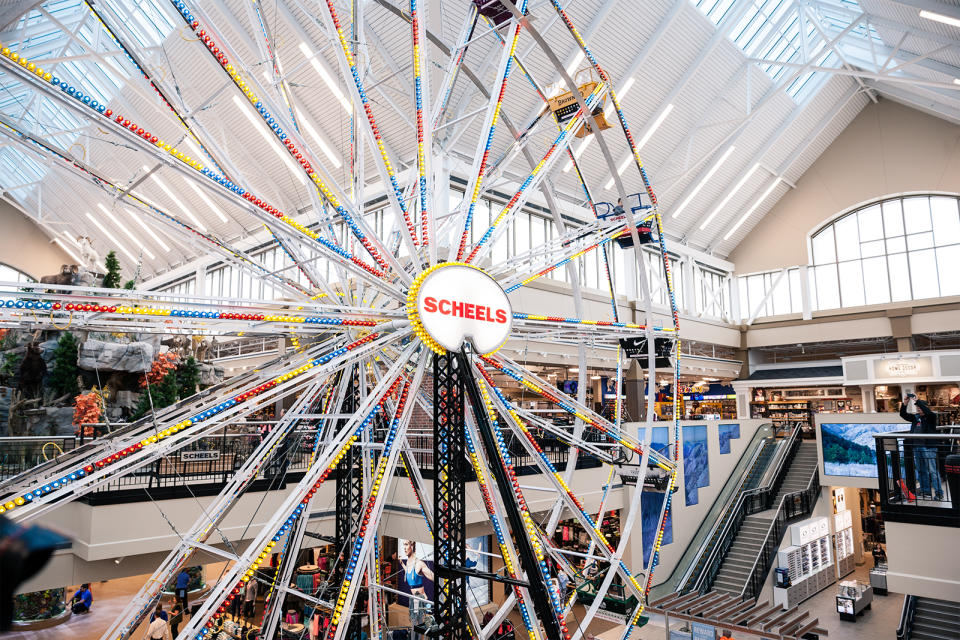
While a museum may not generate very high sales per square foot, it draws traffic that theoretically lifts business at nearby stores and restaurants. Macerich expects the Arte Museum to attract about 1 million visitors a year.
“People bring energy to the mall. People and energy equate to retail sales and improving retail sales equates to better rents,” O’Hern said.
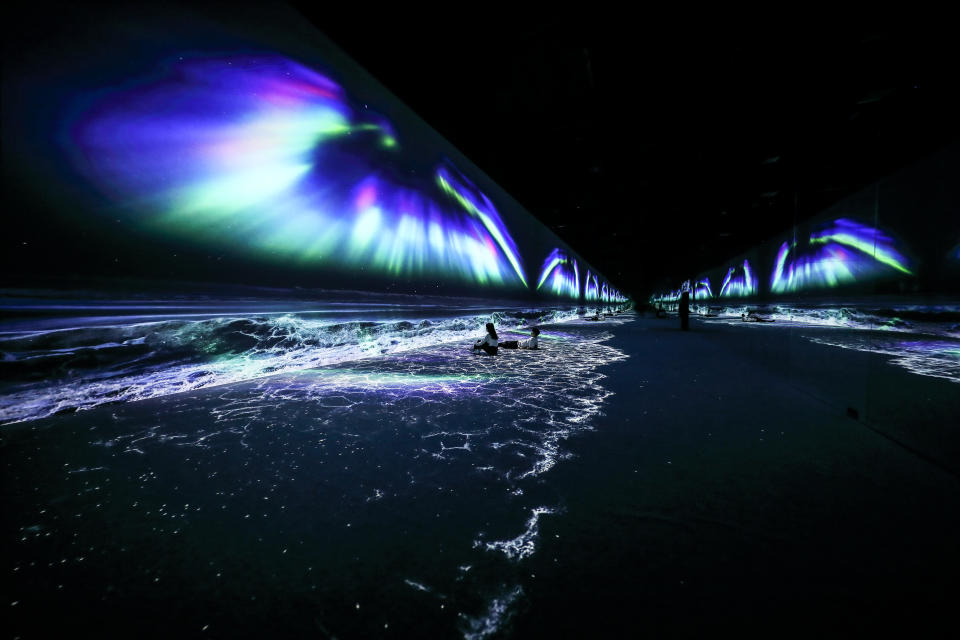
On the more traditional side of the Macerich equation, construction is underway at Scottsdale Fashion Square to extend the center’s luxury presentation to the south wing, anchored by Nordstrom, to accommodate additional luxury brands and dining. An 11,000-square-foot Hermès will be joining such brands as Brunello Cucinelli, Dior, Gucci, Dolce & Gabbana and Nobu. Previously, a former Barneys New York department store was replaced with an Apple store, and Industrious, marking the first time the shared working space concept has moved into a mall location.
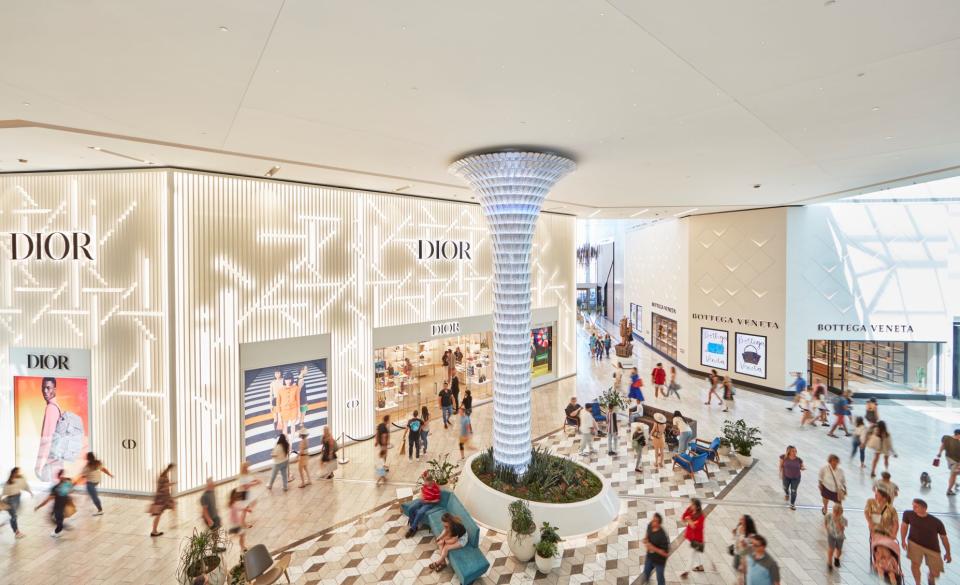
“The leasing environment is as strong as we’ve ever had. Quite frankly, it’s better than before the financial crisis of 2008,” said O’Hern. Last year, Macerich signed 974 leases totaling more than 3.8 million square feet. Leasing spreads, the difference in costs between the old and new or renewed leases, were up 4 percent.
At the end of the fourth quarter of 2022, Macerich’s malls were 92.6 percent leased, an increase of 110 basis points over Q4 2021, and a 50-basis point sequential improvement over Q3 2022.
“Full occupancy,” O’Hern said, would be considered 94 or 95 percent leased. “There’s always going to be some fractional vacancy as we move tenants around. But we’re not chasing occupancy. We have more of an opportunity to improve the rental rate.”
Industry reports indicate the company (a real estate investment trust) is expecting $56 million growth in annual rent income from store openings this year through the end of 2025.
Macerich’s same-center net operating income (NOI) increased by 7.5 percent in the fourth quarter, marking the second straight year of NOI growth exceeding 7 percent.
For 2022, sales per square foot for tenants under 10,000 square feet averaged $869, a 7 percent lift over 2021. Total revenues came to $859.1 million, up 1.4 percent from 2021.
O’Hern said that traffic is tracking 95 percent of pre-COVID-19 levels and that retail sales are closer to 115 percent of pre-COVID-19 levels.
The company has strengthened its financial position by reducing debt levels in 2021 alone by $1.7 billion, a 20 percent decrease, though the long-term debt is still high at about $4.5 billion at the end of 2022. The stock is currently trading at about $10 a share, down from the 52-week high of $14.83 and up from a low of $7.40.
A possible property transaction could give a boost to the balance sheet. “We’re working with the owners of the Philadelphia 76ers to potentially bring a sports and entertainment arena to Fashion District Philadelphia,” O’Hern said. It’s where Macerich has a three-block stretch of retail that was rebuilt and re-opened in 2019. “We would sell one of the blocks to the Philadelphia 76ers and they would put in an arena.” If that happened, “We should see a tremendous collateral benefit.” The 76ers NBA basketball team currently plays in Philadelphia’s Wells Fargo Center.
According to company information, in 2022 “Macerich drove a significant amount of financing activity, demonstrating that the debt markets for its A-quality regional town centers are improving and the company is getting deals done.”
Macerich’s portfolio is concentrated in California, the Pacific Northwest, Phoenix/Scottsdale, and the metro New York to Washington, D.C., corridor. Macerich owns 47 million square feet of real estate. Macerich disposed of several non-core and less productive assets over the last 10 years, to invest capital in its most productive assets.
“If you go down our list of properties, you just see a lot of really high-quality assets, some of the best in the country,” O’Hern claimed, citing the Queens Center in the Elmhurst section of New York City, among other properties. The Queens Center, which is predominantly occupied by traditional, moderate-priced retailers, generates more than $1,000 a square foot, O’Hern said. It’s fueled by the dense and diverse population of the borough of Queens. Last month, Primark, the value-oriented fashion retailer from Ireland which first entered the U.S. in 2015, joined the Queens Center’s retail roster. Macerich is bullish on the concept and has so far brought Primark to seven malls.
Another top-performing Macerich property is The Village at Corte Madera in California, which generates close to $1,500 in sales a square foot, according to O’Hern.
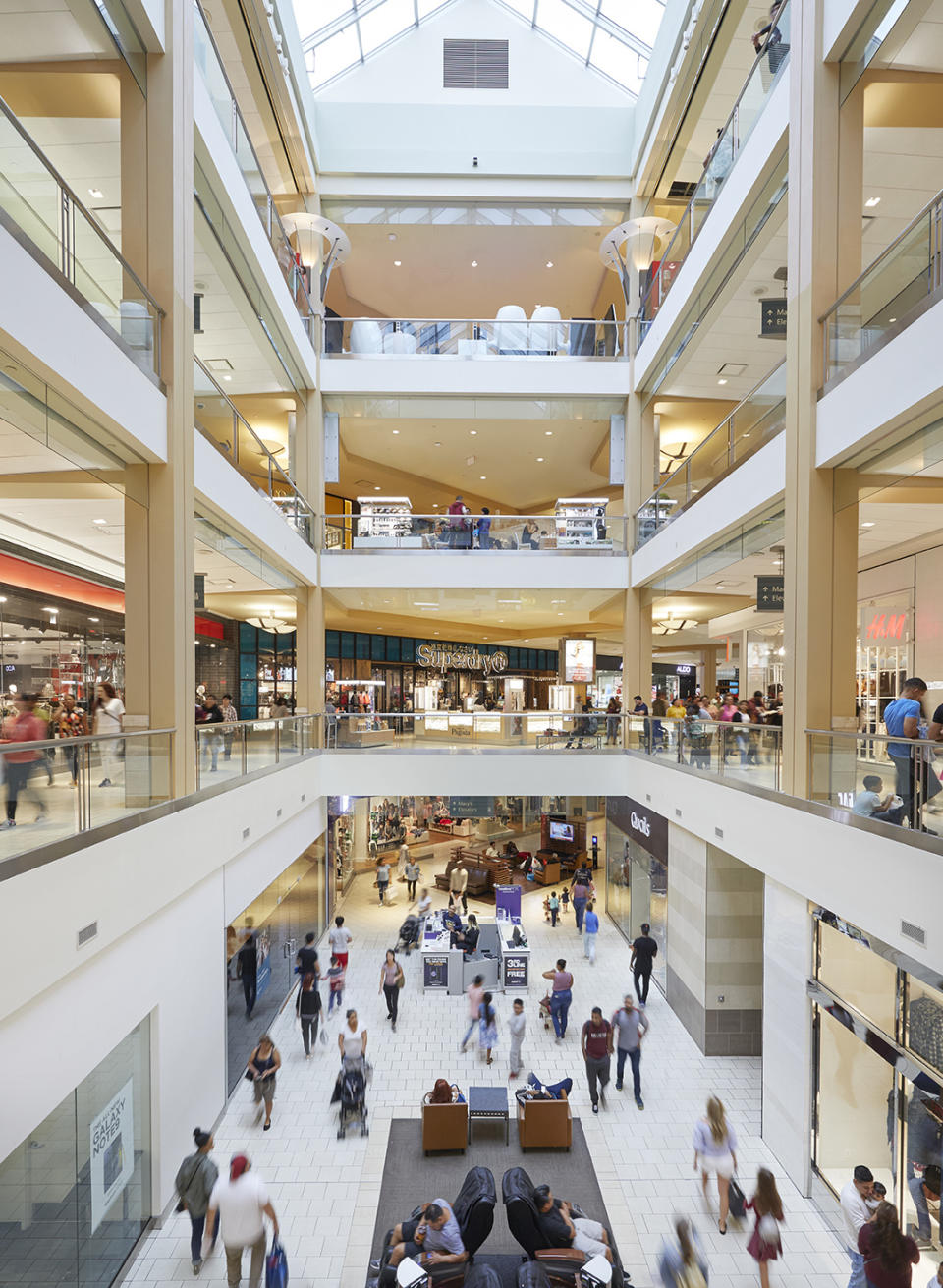
Tysons Corner Center in Virginia, another of the top centers in the portfolio, is a prime example of the densification strategy, with recent additions of an office tower, a residential tower, and a Hyatt Hotel. There’s even a train station attached to it, and a former Lord & Taylor that is being considered for office or residential use or a combination of the two.
“The A mall today is much different than it was 10 or 15 years ago when you’d have department stores, apparel stores, footwear. You’d have a little bit of food and beverage, which often times was just a food court. Looking at the leasing volumes today it comes from not just traditional retail, but also nontraditional concepts like Life Time, which is a high-end fitness center. They get approximately 5,000 member visits a week. They’re just now coming to the West. We’ve got one open in Phoenix in the Biltmore Fashion Park and they’re doing extremely well there. They had the misfortune of opening in March of 2020,” the beginning of the pandemic. “But they’ve overcome that and they’re doing quite well. We also just opened a Life Time in Scottsdale Fashion Square and later this year Life Time will open in Broadway Plaza,” an open-air center in Walnut Creek, California. “They pay a decent rent and bring in a lot of people, and people drive retail sales.”
At Santa Monica Place, the first two levels were formerly occupied by Bloomingdale’s, which closed. The site did see a number of businesses close during the pandemic. But Din Tai Fung, a famous Asian restaurant, is opening on the third level with an outdoor dining deck overlooking the ocean. Din Tai Fung also operates at Macerich’s Washington Square mall in suburban Portland, Oregon. “People are known to line up for an hour to get in,” O’Hern said. Also, Studio One, a high-end fitness center, is going in. It is expecting to draw roughly 4,000 member visits a week.
At the Chandler Fashion Center in suburban Phoenix, a 220,000-square-foot Scheels superstore is replacing a former 144,000-square-foot Nordstrom department store that closed during the pandemic. Macerich moved quickly there. One week after acquiring the box, Macerich revealed the deal with Scheels.
“Scheels has everything. It’s very experiential. I was blown away the first time I walked into a Scheels. They have a Ferris wheel in the middle of the store, and 16,000 gallon aquarium. We would expect their sales volumes to be four times what the department store did.”
Macerich’s “densification and diversification” strategy has been happening for six years, through the pandemic. “Even though COVID[-19] was happening, we did a lot of leasing during that period to experiential, nontraditional uses,” O’Hern said. “Many of those are being built out today. Traffic will continue to uptick as we open some of these experiential deals that we’ve signed. We’ll get the benefit of those with the traffic as we move into 2024 and 2025.”
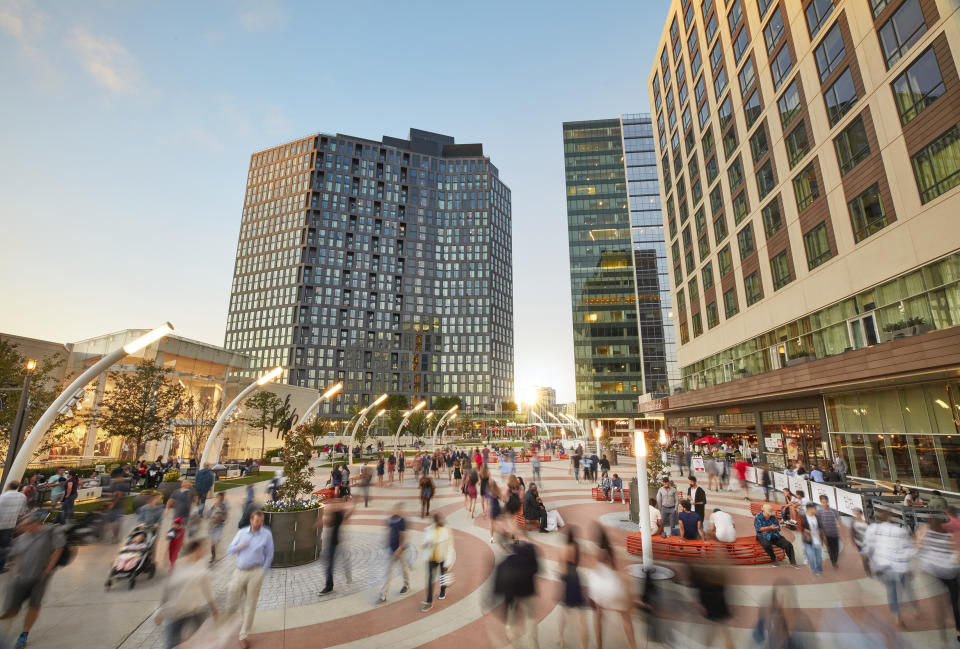
Best of WWD

